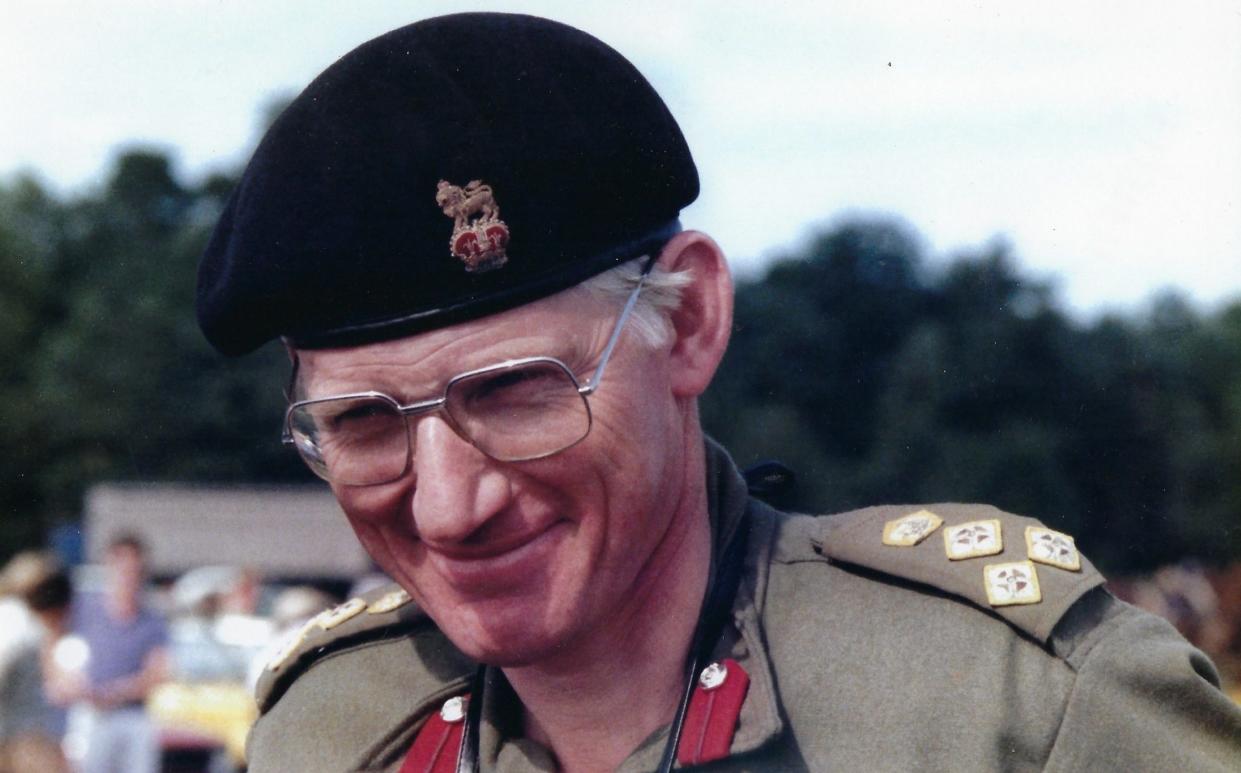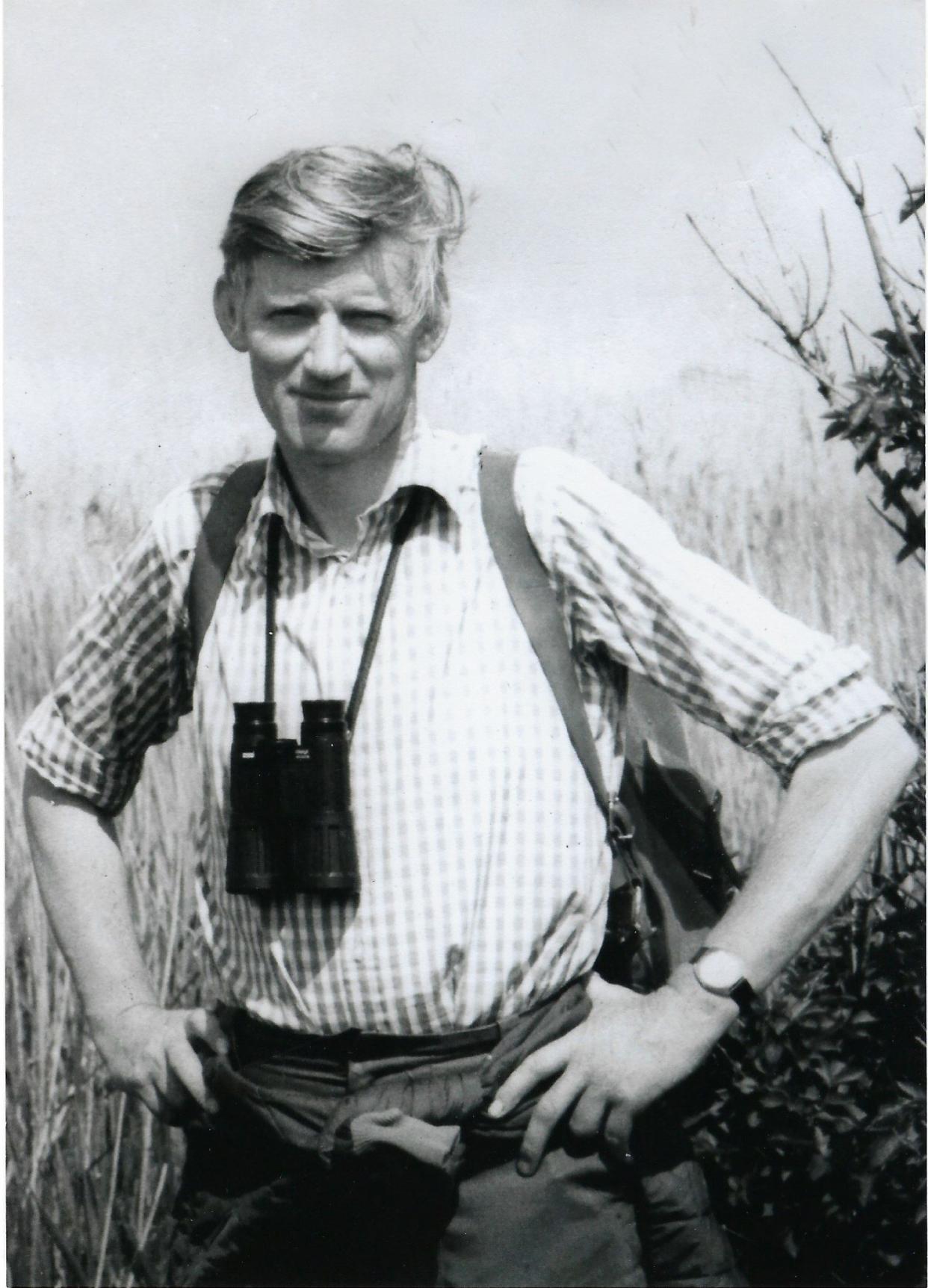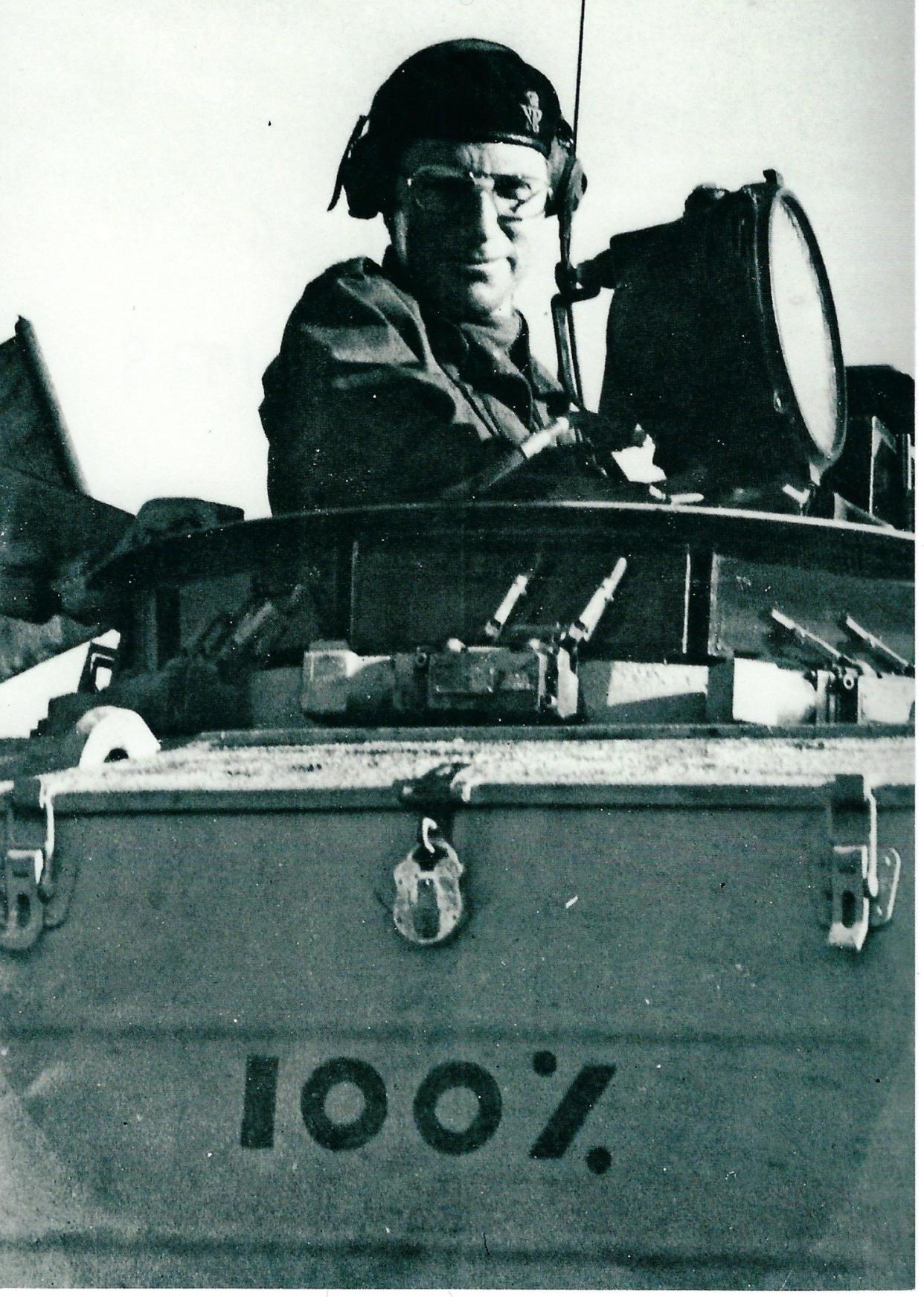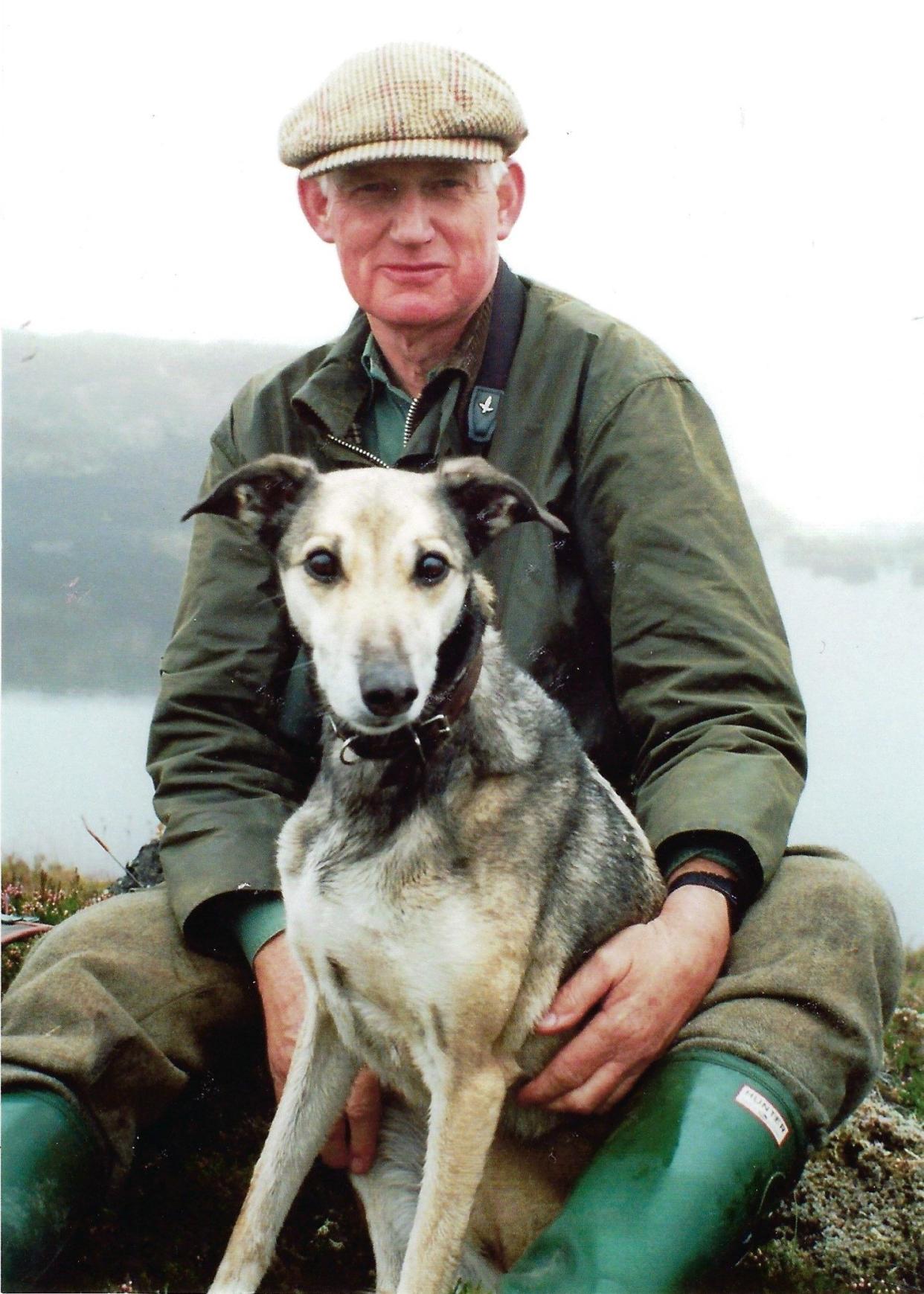Maj Gen Nick Ansell, respected commander of ‘The Skins’ and a noted figure on the Turf – obituary

Major General Nick Ansell, who has died aged 86, described himself as “the quintessential BAOR warrior”; he was also a horseman, hunter, amateur jockey and true West Countryman, fiercely competitive, possessed of genuine enthusiasms and very much his own man.
Racing was his big passion. Over 21 years, from his first ride aged 17, he rode in 266 races, both point-to-point and under National Hunt Rules, with 45 winners and 40 falls, breaking his collar bone four times. His greatest achievement was owning, training and riding Threepwood to win the Grand Military Gold Cup in 1964 a few days after the birth of his second son.

Nicholas George Picton Ansell was born in Marylebone, London, on August 17 1937, the eldest of three children, to Victoria Fuller and Colonel Sir Mike Ansell, DSO. Nick was only three years old when his father was blinded while commanding the 1st Lothians and Border Yeomanry at Dunkirk in March 1940, and held as a prisoner of war in Germany until October 1943, when he was repatriated. His own father had been killed at Néry, north-east France, in 1914 while leading a cavalry charge by the 5th Dragoon Guards.
A former international polo player and show jumper, Colonel Sir Mike Ansell went on – despite his blindness – to restart the Royal International Horse Show and initiate the Horse of the Year Show.
He and Victoria bought Pillhead House near Bideford in North Devon as home for their young family. In its ancient walled garden, encouraged by his mother, Nick developed his love of the natural world, country sports and North Devon in particular. Throughout his life he was a keen bird watcher (giving him a distinct dislike of cats for the destruction they cause to nesting birds).

He led his siblings and other friends on various adventures. Not all his schemes went well – on one occasion they burnt down his parents’ summerhouse; on another, wild-fowling on the Taw with his brother Anthony, trying to retrieve teal he had shot, Nick jumped into the river – to Anthony’s horror – and very nearly drowned.
He had a happy and successful school career at Hawtreys and then Wellington College in Berkshire, becoming head boy at both. His horizons were then widened at Catterick Camp, where he received basic training for his National Service. He was one of only two public-school-educated men in an intake of more than 80; one soldier had spent several months in Borstal.
In autumn 1956, Ansell was commissioned into his father’s old regiment, the 5th Royal Inniskilling Dragoon Guards (the “Skins”), which he joined at Sennelager, BAOR, as a troop leader. He became the boxing officer and took up polo.
He went up to Magdalene College, Cambridge, where he studied Law and was a joint master of the Cambridge University Draghounds. He approached Captain RE Wallace, then legendary master and huntsman of the Heythrop, to see if he could hire a horse to go out with the Oxford University Draghounds. “You can’t possibly do that. I will provide a horse for you and you will have a day with a proper pack of foxhounds,” replied Wallace.
He invited Ansell to dinner along with Vivien Taylor, whose family were hosting the meet next day at North Aston. They became engaged while Ansell was still an undergraduate, and he married her the day after he went down, and got his degree results whilst on honeymoon.

After Cambridge, now married but with no private income and keen to continue his race riding, he decided to return to the Skins rather than pursue a career as a solicitor. He thus embarked on a distinguished military career, becoming the third generation of Ansells to command the 5th Royal Inniskilling Dragoon Guards (1977-79).
He rejoined the regiment as second-in-command of a squadron at Benghazi, Libya. He was put in charge of adventure training and set out with a Land Rover and two lorries to locate the American Air Force B24 Liberator “Lady Be Good” which had crashed in the desert while on a combat mission in the Second World War. Navigating by sun compass and with the help of a BP survey map, they found the plane.
Their commanding officer decided to fly by helicopter to meet the party. He only had enough fuel for the outward trip and depended on finding them to re-fuel but he got lost. His mood was not improved by opening the emergency pack and discovering nothing but a few socks and a quantity of cigarettes which had been literally spiked by the customs, so that the smoke came out sideways. He was eventually found by an American search plane.
In June 1967, at the beginning of the Arab-Israeli Six-Day War, there were riots in Benghazi and Ansell’s squadron had the task of protecting the British Embassy. He decided that arming his men would exacerbate an already tense situation so he equipped each of them with a hockey stick and a dustbin lid. The operation was successful but a firebomb was thrown at a Saracen carrier and several men were badly burned.
He was posted as brigade major at RAC HQ 1 British Corps, Bielefeld, BAOR. His CO was Brigadier (later Field Marshal Sir) Nigel Bagnall who played a notable part in planning the British Army Training Unit Suffield (BATUS) on the vast training base of the Canadian Forces at Alberta. When Ansell rejoined his regiment at Munster, BAOR, he was soon taking a squadron and a company of infantry to exercises at BATUS, which he believed paid dividends in the First Gulf War.
In 1977, based at Osnabruck, BAOR, he assumed command of the Skins. In order to obtain first-rate crews, especially in the field of gunnery, he placed great emphasis on internal recruiting and provided incentives to experienced soldiers to extend their years of service. For two consecutive years, his regiment gained an outstanding “A” grading during the annual RAC gunnery firing periods. He was appointed OBE (Military) after an exacting tour.
Ansell was keen to take the regiment to Northern Ireland to gain operational experience but, despite strong canvassing, his request was refused. General Sir Francis King, the BAOR commander-in-chief, considered that the Province had enough problems without adding those that might ensue from the deployment of an Irish regiment. Within 18 months of Ansell leaving command, however, the Skins were patrolling County Fermanagh on Operation Banner.
In 1987 he was appointed Director Royal Armoured Corps (DRAC) and was soon engrossed in the difficulties of upgrading the Challenger, the Army’s new main battle tank, which since 1983 had progressively replaced the Chieftain with its persistent engine problems. Heavy armour, he insisted, was needed to counter the Warsaw Pact and he was later convinced that the strategy that Nato followed was a major factor in the implosion of the Soviet empire.
In 1987, however, the British Army team with the Challenger came last in the Nato biennial tank gunnery competition. The tank’s engineering, sighting and gun control equipment was no match (in competition) for the technically superior, integrated digital systems of the Leopard and Abrams tanks.
There was a problem with the turret and its dated engineering struggled with modern computer-generated firing. Ansell was convinced that the Challenger was not up to the job, and that its life should not be extended by attempts to upgrade it. Supported by other experts, he expressed his opinion in forthright terms.
In a procurement competition to choose a successor to Challenger 1, a virtually new tank, Challenger 2, manufactured by Vickers Defence Systems, defeated rivals from France, Germany and America. The Armoured Trials and Development Unit (ATDU) based at the RAC Centre, Bovington, Dorset, then embarked on a four-year reliability trial to make sure that Challenger 2 really worked.
Ansell played a critically important part in making sure it did not enter service until it complied fully with the exacting reliability criteria. The tank entered service in 1994, deployed to Kosovo in 1999 and saw action in Iraq in 2003.
Ansell was a senior member of the directing staff at the Royal College of Defence Studies from 1990 to 1992, when he was appointed CB and retired from the Army, aged 55.
Having moved house 26 times in 30 years, Nick and Viv Ansell then joined Nick’s father at Pillhead, with Viv initially caring for Colonel Sir Mike in the final three years of his life.

Ansell returned to the racing world to become Clerk of the Course and then a director at Exeter Racecourse. There he was in his element – designing races which would attract the best horses and building on Exeter’s reputation as a great training ground for potential top class chasers, notably three times Cheltenham Gold Cup-winner Best Mate, who won his first steeplechase at Exeter.
During these years Ansell was also a magistrate on the Barnstaple bench, a Deputy Lieutenant, and in 2002 High Sheriff of Devon.
After 12 years back at Pillhead, Ansell handed over the main house to his son Mark, and moved 100 yards across the garden into what had been his father’s potting shed.
Ansell’s strangest equestrian encounter came when he and his wife were on a riding safari in Rajasthan. Everything went well until, after a third morning of light cantering, the general’s mount started to “go stickily”, as he recalled, and tried to lie down with him.
Thinking not much of it Ansell gave a kick to the belly and carried on. “The second time she tried to lie down I treated it as a warning signal,” he recalled. “On dismounting, I noticed a small hoof protruding from her back end. We led her over to a shaded tree and within a few minutes she had produced a topping little colt foal.” The colt was named “Nick of Time”.
On his 80th birthday, having not sat on a horse for 20 years, he announced that he would like to ride the racehorse, Ellens Way, which he owned in partnership with his son Mark; the horse was summering in the paddocks at Pillhead. There were no problems getting Ansell on the horse, or with his riding. Getting him off, however, required three people.
Nick Ansell is survived by his wife of 62 years, Vivien, and their daughter and two sons.
Nick Ansell, born August 17 1937, died February 18 2024


